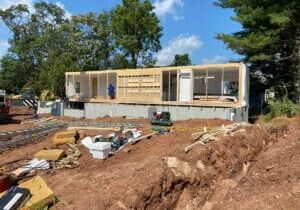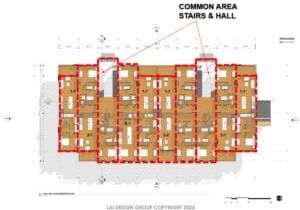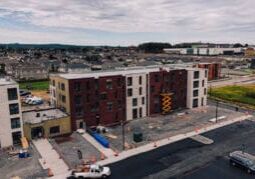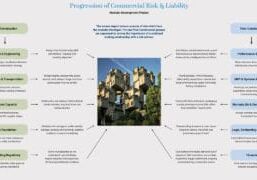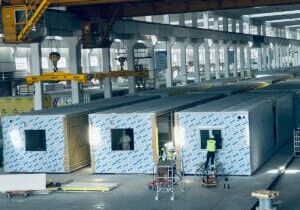Through It All, It's Still About the Workers

Anirban Basu is the Chairman & CEO of Sage Policy Group and Chief Economist of the Modular Building Institute.
It wasn’t supposed to be this way. A flurry of interest rate increases engineered by the Federal Reserve in 2022 and 2023 was intended to dramatically soften U.S. economic conditions, with particular impact anticipated for interest rate sensitive segments like real estate, homebuilding and nonresidential construction. While many contractors would not have been expected to be enamored with the associated loss of demand for their services, at least the presence of smaller backlog would entail suffering less intensely from America’s shortage of skilled construction workers.
Alas, things rarely work out as expected. All things being equal, higher interest rates have suppressed demand for construction services, at least in certain segments. But all things are not equal. For instance, the coming of age of Millennials, America’s largest generation, has accelerated household formation and expanded demand for housing. While elevated mortgage rates (by Millennial standards – the oldest of that generation turns 44 this year) have diminished opportunities for Millennials to purchase homes, they have likely induced more members of the generation to lease apartments. Not surprisingly, apartment construction has been elevated, though several indicators suggest that that has begun to slow.

Anirban Basu speaks at the Modular Building Institute's annual World of Modular conference.
Other factors have kept contractors busy. A tsunami of public funds has fueled construction of schools, roads, bridges, water/sewer systems, and other public works. The growing pervasiveness of artificial intelligence and general expansion of digital footprints has expanded the need for data centers. The nation’s push towards new forms of energy has also fueled construction worker demand, with many states implementing ambitious goals for transition to renewables irrespective of cost.
Reshoring of supply chains to America has perhaps been the single most important factor in creating new demand for construction services during the last several years. Reshoring is transpiring in the context of geopolitical tensions between the U.S. and China, the world’s two largest economies (by far), a desire for simplified logistics among manufacturers and distributors, and massive federal subsidies to manufacturers willing to add domestic production capacity in key segments has unleashed dozens of megaprojects around the nation. In short, production capacity is coming back to America in a large way, whether with respect to semiconductor, battery, or EV production. All these things and more have rendered America’s construction firms far busier than many economists expected them to be.
Among the implications is that if anything demand for skilled construction workers has expanded during a period of elevated financing costs. By February 2024, the number of available, unfilled construction job openings had reached an all-time high. At some point, interest rates will fall, creating another surge in demand for such workers. In short, solving the nation’s skilled worker shortage issue has never been more important.
What the Data Say
According to the latest data from the U.S. Bureau of Labor Statistics, the total number of construction jobs in the U.S. stood at 8.2 million as of April 2024. On a year-over-year basis, the number of jobs had expanded by 3.2 percent. By comparison, the total number of jobs economywide grew 1.8 percent. Not coincidentally, wages have also been on the rise. Prior to the pandemic, average hourly earnings in construction stood at $31.38. As of April, it was $38.02, an increase of 21.2 percent in approximately four years.
It is true that the number of construction job openings has been declining recently, likely a response to the impact of higher interest rates on project starts. When the Federal Reserve began raising rates in March 2022, it was doing so off an extraordinarily low base of interest rates. It took several interest rate increases before rates were high enough to have bite. In the interim, another set of construction projects was planned, financed, and started. It appears that interest rates have now been high enough for long enough to blunt a certain level of activity.
According to data from the Jobs Openings and Labor Turnover Survey (JOLTS), the number of construction job openings was 25,000 lower this April than last, with a meaningful decline in openings since February. As of this writing, the industry is associated with 338,000 available, unfilled job openings.
Many observers would indicate that a new phenomenon has already begun to solve the construction worker shortfall – immigration. The rush across America’s southern border has indeed expanded the size of the nation’s labor force. There are several industries closely associated with immigration of this type, including agriculture and construction. It is conceivable that the recent decline in construction job openings is attributable not only to higher project financing costs, but also to the ability of some contractors to fill openings with new migrants.
However, many of these newcomers lack not only documentation, but also the specific skills required to work with electrical or other forms of equipment. In other words, while immigration may help resolve some of the worker shortage, it does relatively less to solve the skilled worker shortage.
Some Novel Ideas
Traditional thinking regarding addressing the skilled construction worker shortage has focused on apprenticeship programs, two-year colleges, and vocational high schools. Those institutions remain hugely important, but in and of themselves have been inadequate to fully rectify the situation. Accordingly, additional ideas are needed.
Governor Janet Mills of Maine recently signed an executive order that would promote the training and recruitment of more women into construction. That such industry concerns would rise to the level of governor is impressive. Presently, women hold only 15 percent of the state’s construction jobs. The executive order would direct state agencies to identify barriers women face with respect to entering the industry. The order will also better connect employers with women presently immersed in pre-apprenticeship programs, apprenticeship programs, or in relevant post-secondary educational programs.
Maine has also directed a sizable amount of funding towards promoting women in trade-related fields. In 2022, the Governor signed the Maine Jobs & Recovery Plan, directing $12 million in funding towards apprenticeship programs. It also allocated $25 million towards Career and Technical Education programs.
There are other ideas. The emergence of new construction technologies stands to be of enormous appeal to younger workers, who prefer working in state-of-the-art contexts. Ongoing concerns regarding student debt also have many families searching for alternatives to the traditional borrow-and-educate model. Skilled construction trades offer precisely that type of alternative. Finally, there is on-the-job training. Taken altogether, it may be that the incoming unskilled workers of today will emerge as the highly skilled and entrepreneurial professionals of tomorrow.
More from Modular Advantage
AoRa Development Aims for New York’s First Triple Net Zero Building Using Modular Methods
More cities are providing funding for newer infrastructure projects as long as they meet sustainability requirements. This is how modular can fit the bill, thanks to its lower waste production.
Developers and Designers: Lessons Learned with Modular Design
Modular construction is attractive to many developers because sitework and module construction can occur simultaneously, shortening the schedule and reducing additional costs.
UTILE: Putting Modular Building on a Fast Track
In Quebec, UTILE is taking the lead in creating affordable modular buildings to help decrease the student housing shortage. During the process, the company discovered what it takes to make the transition to modular building a success.
Sobha Modular Teaches Developers How to Think Like Manufacturers
With its 2.7 million square foot factory in UAE, Sobha Modular is bringing both its high-end bathroom pods to high-end residences to Dubai while developing modular projects for the U.S. and Australia.
RoadMasters: Why Early Transport Planning is Make-or-Break in Modular Construction
In modular construction, transportation is often called the “missing link.” While it rarely stops a project outright, poor planning can trigger costly delays, rerouting, and budget overruns.
Navigating Risk in Commercial Real Estate and Modular Construction: Insights from a 44-Year Industry Veteran
Modular projects involve manufacturing, transportation, and on-site assembly. Developers must understand exactly what they are responsible for versus what they subcontract. Risk advisors should research the developer’s contractors, subcontractors, and design-build consultants—especially the modular manufacturer.
Art²Park – A Creative Application of Modular and Conventional Construction
Art²Park is more than a park building—it’s a demonstration of what modular construction can achieve when thoughtfully integrated with traditional materials. The use of shipping containers provided not only speed and sustainability benefits but also a powerful structural core that simplified and strengthened the rest of the building.
Building Smarter: A New Standard in Modular Construction Efficiency
Rising material prices, labour shortages, expensive financing and tightening environmental rules have made conventional construction slower, costlier, and more unpredictable. To keep projects on schedule and within budget, builders are increasingly turning to smarter industrialized methods.
Resia: Breaking All the Rules
Resia Manufacturing, a division of U.S.-based Resia, is now offering prefabricated bathroom and kitchen components to industry partners. Its hybrid fabrication facility produces more precise bathroom and kitchen components (modules) faster and at lower cost than traditional construction. Here’s how Resia Manufacturing does it.
How LINQ Modular Innovates to Bring Modular To The Market in the UAE and Beyond
LINQ Modular, with an office and three manufacturing facilities in Dubai, is a modular firm based in United Arab Emirates. The company is on a mission: to break open the housing and construction markets in the Gulf Cooperation Council (GCC) area with modular.

